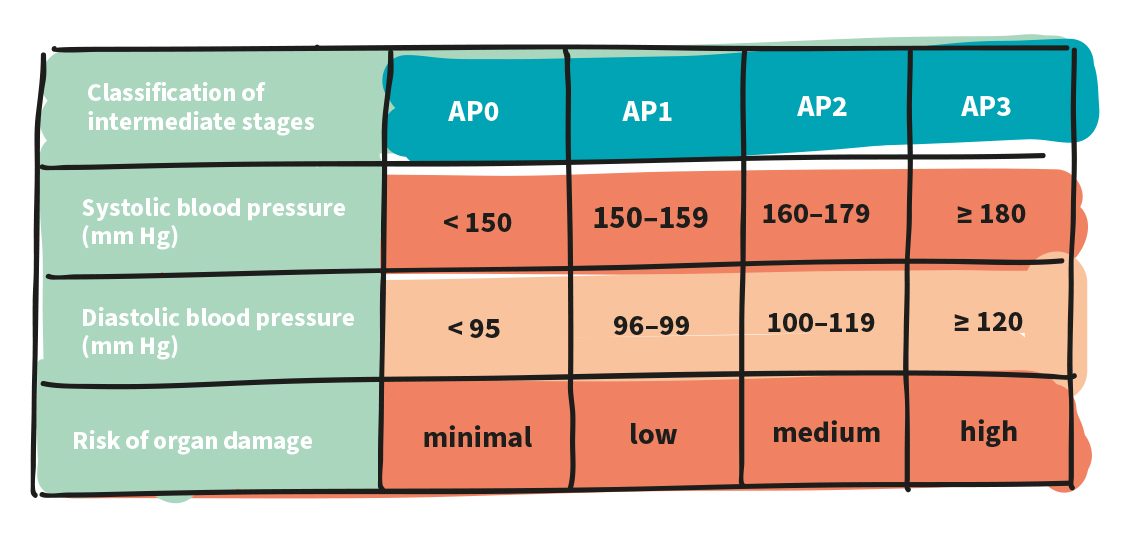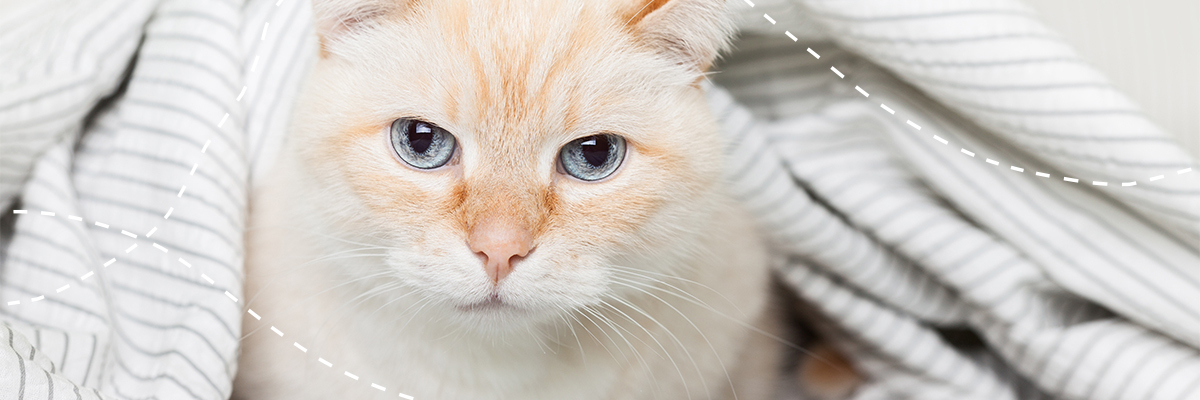
Summary
- Chronic kidney disease is categorised into stages 1 to 4
- According to IRIS, there are different ways to divide chronic kidney disease into stages
- Different parameters are used for this
Chronic kidney disease in cats (and dogs) is categorised into four stages by the IRIS (International Renal Interest Society). A stage thus determines the severity of the chronic kidney disease and is also related to the prognosis. IRIS then recommends specific treatments and procedures depending on the stage. First, however, the diagnosis “chronic kidney disease” must be confirmed according to the recommendations of IRIS.
Diagnose first
Before staging= Classification of the cat into a stage of chronic kidney disease according to IRIS... can take place, CKD must be diagnosed according to the recommendations of the IRIS. For this purpose, the creatinineCreatinine is a breakdown product of muscle metabolism. Its blood level is dependent, among many factors, on age, weight, nutritional status and muscle mass. Hence, creatinine levels in the blood vary from individual to individual. Creatinine is continuously excreted in the urine. Increased blood creatinine... blood value (blood sample) and also the specific gravity of the urine (urine sample) are routinely determined. Nowadays, the diagnosis is supported by the SDMASDMA = Symmetrical Dimethylarginine, which is a degradation product of the amino acid arginine and is excreted solely through the kidneys. SDMA is a highly specific biomarker for kidney function in cats. Read more: SDMA test (blood test)... test (blood sample), as well as other examinations (blood, urine, general examinations, X-ray, ultrasound, etc.). IRIS considers the diagnosis of CKD to be confirmed if one or more of the following parameters apply:
1) Evidence of a reduction in the filtration capacity of the kidneys:
- Presence of azotemia
- Progressive increase of creatinine level and/or SDMA over time, even if both blood levels are still within the normal range. A consistently elevated SDMA level > 14 ug/dl alone indicates the presence of CKD, as this level usually rises ahead of the creatinine blood level.
- Persistent renal proteinuriaIncreased protein in urine, leading to loss of protein. Normally, only a very small amount of protein is excreted in the urine. In chronic kidney disease, the amount lost may increase. High blood pressure damages blood vessels in the nephrons making them more permeable and... (e.g. not due to inflammation of the bladder). To determine the presence of proteinuria, the so-called UPC value is determined (more on this below).
2) Evidence of a reduction in kidney performance:
- Loss of the ability to concentrate the urine, which is measurable in a reduction of the specific gravity of the urine (urine sample). The urine specific gravity is then <1.035 without azotemia also being present.
3) Changes in kidney structure:
- Kidney cysts
- Kidney stones
- Neoplasms (tumours)
Staging
Subsequent staging can only be done if the creatinine and SDMA values in particular are stable, i.e. do not change dramatically within a short period of time. For this purpose, both values should be measured twice within 2-4 weeks. If the values deviate by less than 25 %, a stable value can be assumed and staging can be carried out.
Stage 1
Usually, no clinical symptoms are visible in the first stage and the creatinine and/or SDMA values are in or very close to the normal range:
- Creatinine is < 140 μmol/l or <1.6 mg/dl.
- SDMA is <18 μg/dl, but always > 14 μg/dl in several samples.
Renal changes such as loss to urine concentration (specific gravity of urine <1.035) and/or first signs of proteinuria as well as a change in renal structure are evident. Proteinuria is divided into sub-stages that are used alongside the four IRIS stages. It is important to measure the UPC quotient twice at intervals of 10-14 days. It is also elevated, for example, if there is inflammation in the urinary tract or bladder.
The IRIS classifies the following three sub-stages based on the UPC quotient:
 Furthermore, high blood pressure can already exist in the first IRIS stage of CKD. IRIS also provides sub-stages for this, which classify the risk of organ damage (e.g. retinal detachment, stroke, kidney damage) from minimal to low, medium to high.
Furthermore, high blood pressure can already exist in the first IRIS stage of CKD. IRIS also provides sub-stages for this, which classify the risk of organ damage (e.g. retinal detachment, stroke, kidney damage) from minimal to low, medium to high.
IRIS classifies the following four sub-stages based on systolic and diastolic blood pressure:
 High blood pressure can also cause more proteins to be squeezed out of the blood that would normally remain in the blood. These proteins then cannot be recovered, so they are lost through the urine and thus proteinuria occurs due to the high blood pressure.
High blood pressure can also cause more proteins to be squeezed out of the blood that would normally remain in the blood. These proteins then cannot be recovered, so they are lost through the urine and thus proteinuria occurs due to the high blood pressure.
Clinical symptoms may include a dull coat, increased drinking (polydipsiaExcessive thirst due to illness, leading to excessive production of urine (polyuria)....) and increased urination (polyuriaExcessive production of urine, potentially due to kidney failure....) as well as the first signs of fatigue. However, these are usually not recognised. Additionally, the cat may already lose weight imperceptibly.
First stage measures
As far as possible, factors that trigger or worsen CKD should be identified or avoided. This includes medications that need to be excreted through the kidneys (e.g. painkillers such as so-called NSAIDs). It is important to control the cat’s fluid intake and to make water intake attractive to the cat, thereby stimulating it. If proteinuria and/or hypertensionHigh blood pressure. are present, they should be treated. Similarly, the IRIS recommends keeping phosphate levels below 1.5 mmol/L. This can be achieved by adding phosphate binders to the feed.
At this and subsequent stages, the aim is to slow down the progression of CKD while maintaining the cat’s quality of life.

Chronic kidney disease requires close cooperation between the veterinarian and the cat owner, since regularity is essential for the management of CKD. This concerns both regular checks on the cat’s status and the application of measures by the cat owner and the veterinarian. And it requires a lot of patience, time and also financial resources and can also be accompanied by emotional stress for the cat owner. Especially the regular and several times daily administration of medication can be very demanding for the cat owner, especially if the cat eats poorly and some tricks do not work. It is then important to select those products that most affect the cat’s quality of life and to focus on giving just these medications. The advice of a veterinary expert is undoubtedly useful for prioritising medications.
Despite all measures, the cat will deteriorate over time. The progression of CKD is not a linear process, but occurs in stages. In the case of progression, it is necessary to clarify what has changed and what additional measures need to be taken in order to possibly manage the additional complications quickly.
Bibliography:
- Sparks, A. H. / Caney, S. / Elliot, J. / Finch, N. / Gajanayake, I. / Langston, C./ Lefebvre, H. / White, J. & Quimby, J. (2016): ISFM Consensus Guidelines on the Diagnosis and Management of Feline Chronic Kidney Disease. Journal of Feline Medicine and Surgery,18, S. 219–239.
- IRIS-Staging: http://www.iris-kidney.com/pdf/IRIS_Staging_of_CKD_modified_2019.pdf
- http://www.iris-kidney.com


